To install a propane tankless water heater, follow these steps: Connect the water lines, attach the gas line, and install the venting system. In addition, ensure that the heater is securely mounted to the wall.
This will allow for efficient and reliable operation of your tankless water heater in your home. Installing a propane tankless water heater is a great way to enhance your home’s energy efficiency and enjoy a continuous supply of hot water.
Unlike conventional water heaters, tankless models heat water on demand, eliminating the need for a storage tank and reducing energy consumption. With their compact design, tankless water heaters are perfect for homes with limited space. However, the installation process requires careful attention to detail to ensure optimal performance and safety.
In this guide, we will provide step-by-step instructions on how to install a propane tankless water heater, allowing you to enjoy an endless supply of hot water while saving on energy costs.
Considerations For Selecting A Propane Tankless Water Heater
When it comes to selecting a propane tankless water heater, there are several key considerations that should be taken into account. From determining the size and capacity requirements to evaluating the energy efficiency ratings, these factors will play a significant role in choosing the right water heater for your needs. Additionally, understanding the installation requirements and considering your budget will help ensure a successful and cost-effective installation. Let’s delve into each of these considerations in more detail.
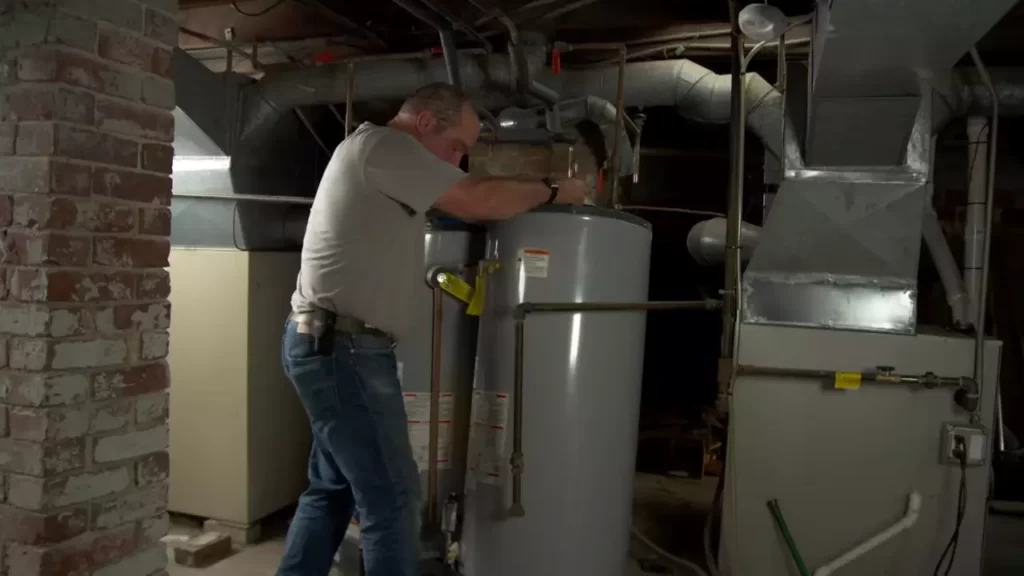
Size and Capacity Requirements
One of the most important factors to consider when selecting a propane tankless water heater is determining the right size and capacity for your household. This will largely depend on the number of people in your home and their typical hot water usage. To calculate the required capacity, consider the peak hot water demand in your home. This can be estimated by adding up the flow rates of all the appliances and fixtures that will be using hot water simultaneously.
Here’s an example of how you can calculate the required capacity:
| Appliance/Fixture | Flow Rate (GPM) |
|---|---|
| Shower | 2.5 |
| Dishwasher | 1.5 |
| Washing Machine | 2.0 |
| Total | 6.0 GPM |
Based on the example above, you would need a propane tankless water heater with a capacity of at least 6.0 gallons per minute (GPM) to meet the hot water demands of your household.
Energy Efficiency Ratings
Another crucial consideration is the energy efficiency rating of the propane tankless water heater. Look for models that have a high energy efficiency rating, also known as the Energy Factor (EF). The higher the EF, the more efficient the unit is at converting propane into hot water, which can result in significant energy savings over time. Consider choosing a water heater with an EF of at least 0.82 or higher for optimal efficiency.
Installation Requirements
Before making a final decision, it’s important to understand the installation requirements of the propane tankless water heater. These units typically require a dedicated gas line and venting system, so it’s vital to ensure your home’s infrastructure can accommodate these needs. Additionally, consider the location where the water heater will be installed to ensure proper ventilation and access for maintenance and repairs.
Budget Considerations
Finally, budget considerations are an important factor when selecting a propane tankless water heater. While these units can be more expensive upfront compared to traditional tank-style water heaters, they offer long-term energy savings and a longer lifespan. Before making a purchase, evaluate the overall cost of the unit, including installation and potential maintenance expenses. It’s important to strike a balance between your budget and the desired features and quality of the water heater.
By taking into account the size and capacity requirements, energy efficiency ratings, installation requirements, and budget considerations, you’ll be able to make an informed decision when selecting a propane tankless water heater for your home. Remember to carefully evaluate each factor based on your specific needs and consult with a professional if you require further assistance.
Comparing Different Propane Tankless Water Heater Brands
Researching reputable brands
When it comes to installing a propane tankless water heater, one of the most crucial steps is comparing different brands to find the one that best fits your needs. Researching reputable brands is the first and foremost task that will help you make an informed decision. It’s important to choose a brand that is known for its reliability, durability, and efficient performance. Let’s delve into the steps involved in comparing different propane tankless water heater brands.
Evaluating customer reviews and ratings
To make sure you are getting a propane tankless water heater that meets your expectations, evaluating customer reviews and ratings is paramount. By reading up on what other customers have experienced, you can gather valuable insights into the quality and performance of various brands. Look for reviews and ratings on reliable platforms that specialize in providing authentic, unbiased customer feedback. This will help you narrow down your choices and identify brands that consistently receive positive feedback from satisfied customers.
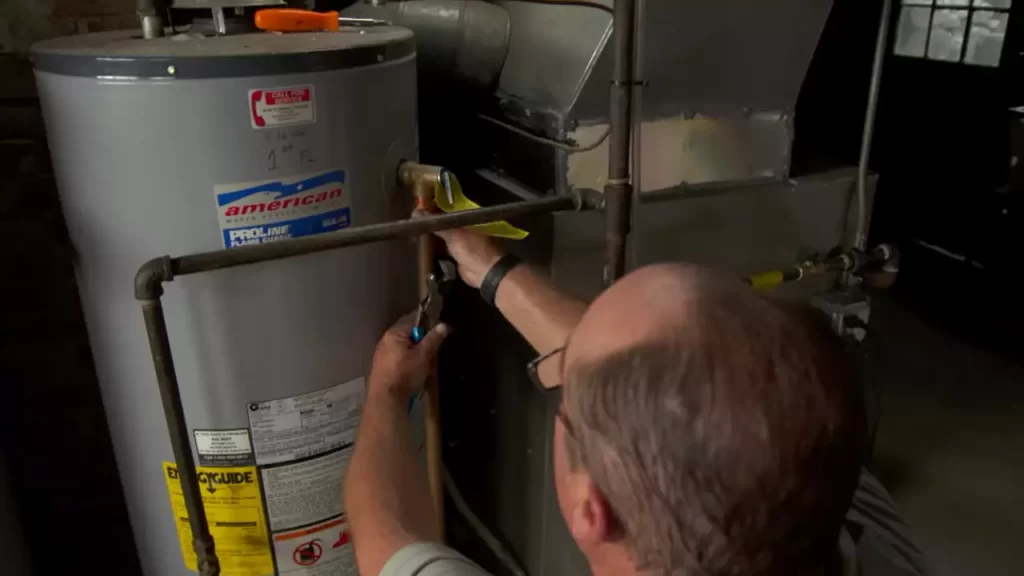
Comparing features and specifications
Once you have shortlisted a few reputable brands based on customer reviews, it’s time to compare the features and specifications they offer. Pay close attention to factors such as the heating capacity, flow rate, energy efficiency, and temperature control options. These features will have a direct impact on the performance and functionality of the propane tankless water heater. Create a checklist or a table comparing the various features and specifications of each brand to easily visualize and grasp the differences.
Analyzing warranty information
Warranty information is an essential aspect to consider when comparing different propane tankless water heater brands. A comprehensive warranty can provide peace of mind and serve as an indicator of the manufacturer’s confidence in their product. Look for details regarding the duration of the warranty, what is covered, and any additional perks offered by the brand. Analyzing warranty information will help you determine the level of support and assistance you can expect in case any issues arise with your propane tankless water heater in the future.
By following these steps and carefully comparing different propane tankless water heater brands, you can make a well-informed decision. Keep in mind that choosing a suitable brand involves considering reputable brands, evaluating customer reviews and ratings, comparing features and specifications, and analyzing warranty information. Take your time in the research process to ensure that the propane tankless water heater you install will meet your specific requirements and provide you with reliable, on-demand hot water.
Assessing Your Home’s Propane Supply
Before installing a propane tankless water heater in your home, it’s essential to assess your home’s propane supply to ensure that it is compatible with the new system. There are a few key factors to consider during this assessment.
Determining existing propane infrastructure
To start, you need to determine the existing propane infrastructure in your home. This includes identifying whether you have an existing propane tank or if you are connected to a propane utility service. If you already have a propane tank, you must assess its location and accessibility. This will help you determine if it is suitable for the installation of a tankless water heater.
Assessing propane tank capacity
The capacity of your propane tank is another important factor to consider. Depending on the size of your household and your hot water usage, you need to ensure that your propane tank has enough capacity to support the demand of a tankless water heater. You can determine the capacity of your tank by checking its specifications or consulting with the propane provider. It’s important to note that if your tank capacity is insufficient, you may need to consider upgrading to a larger tank or increasing the number of tanks to accommodate the new water heater.
Checking for leaks or maintenance requirements
Prior to installing a tankless water heater, it is crucial to inspect the propane tank and its associated equipment for any leaks or maintenance requirements. Gas leaks can be extremely hazardous, so it’s important to conduct a thorough inspection. Look for signs of corrosion, loose connections, or any unusual smells near the tank. If you notice any issues, it is recommended to contact a professional to handle the repairs before proceeding with the installation.
Consulting a professional if necessary
If you are unsure about any aspect of assessing your home’s propane supply, it is always wise to consult with a professional. They have the expertise to evaluate your propane system and make recommendations based on your specific needs. A professional can also ensure that the installation process is done safely and in accordance with local codes and regulations.
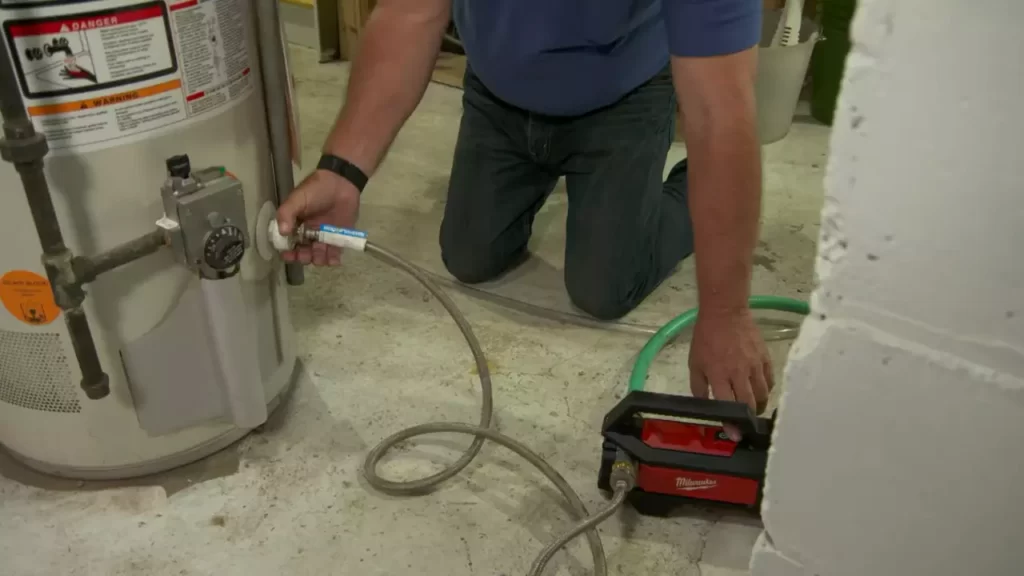
Gathering Required Tools And Materials
Before you begin the installation process of your propane tankless water heater, it’s essential to gather all the necessary tools and materials to ensure a smooth and successful installation. In this section, we will provide you with a comprehensive list of the tools and equipment you’ll need, the materials required for the installation, as well as the safety equipment and precautions you should consider.
List of necessary tools and equipment
Having the right tools and equipment handy will make the installation process much more efficient and hassle-free. Here is a list of what you’ll need:
- Wrench set: A set of wrenches in different sizes will be necessary for securely fastening the fittings and connections.
- Adjustable pliers: These will come in handy for tightening and loosening various components during the installation process.
- Pipe cutter: You’ll need a pipe cutter to accurately cut and resize the gas pipes according to your desired setup.
- Teflon tape: This tape is essential for providing a tight seal on threaded fittings and preventing gas leaks.
- Drill with appropriate drill bits: Depending on your installation requirements, you may need a drill to create holes for mounting brackets or accessing existing connections.
- Screwdriver set: Make sure to have a variety of screwdrivers available for removing and installing screws and other fasteners.
Materials needed for installation
Here is a list of the materials you will require in order to complete the installation of your propane tankless water heater:
- Propane tankless water heater: Select a high-quality model that fits your household’s hot water needs.
- Piping: You’ll need the appropriate length and size of piping to connect the water heater to existing plumbing lines.
- Gas connectors: These connectors ensure a safe and secure connection between the water heater and the gas supply line.
- Mounting brackets: Depending on the installation location, you may need mounting brackets to secure the water heater in place.
- Sealant: Use a gas-rated sealant to seal any gaps or connections to avoid gas leaks.
- Hangers and straps: These will be necessary for supporting and securing the piping in place.
Safety equipment and precautions
When it comes to installing a propane tankless water heater, safety should be your top priority. Ensure you have the following safety equipment and take the necessary precautions:
- Protective gloves: Wear heavy-duty gloves to protect your hands while handling tools and sharp edges.
- Safety glasses: Safeguard your eyes from debris and potential hazards during the installation process.
- Fire extinguisher: Have a fire extinguisher nearby in case of emergencies.
- Proper ventilation: Make sure the installation area has adequate ventilation to prevent the buildup of dangerous gases.
- Gas leak detector: Use a gas leak detector to ensure there are no gas leaks after the installation is complete.
- Read and follow the manufacturer’s instructions carefully: Always refer to the manufacturer’s guidelines to ensure a safe and proper installation.
By gathering all the required tools and materials, as well as taking the necessary safety precautions, you’ll be well-equipped to install your propane tankless water heater effortlessly and safely. Next, we will move on to the installation process itself.
Measuring And Determining Placement
Measuring the available space for installation
Before installing a propane tankless water heater, it’s crucial to start by measuring the available space. This step will ensure that the water heater fits perfectly and occupies the designated area without any hindrance. Failure to measure accurately can lead to installation complications or even the need for expensive modifications. To measure the space, follow these simple steps:
- Clear the area: Remove any obstacles or clutter that might obstruct the measurements and make the space accessible.
- Take precise dimensions: Use a tape measure or ruler and start measuring the height, width, and depth of the designated area. Note down the measurements accurately to refer to them during installation.
- Consider clearance requirements: Keep in mind the recommended clearances provided by the manufacturer, which will be further discussed in the next section.
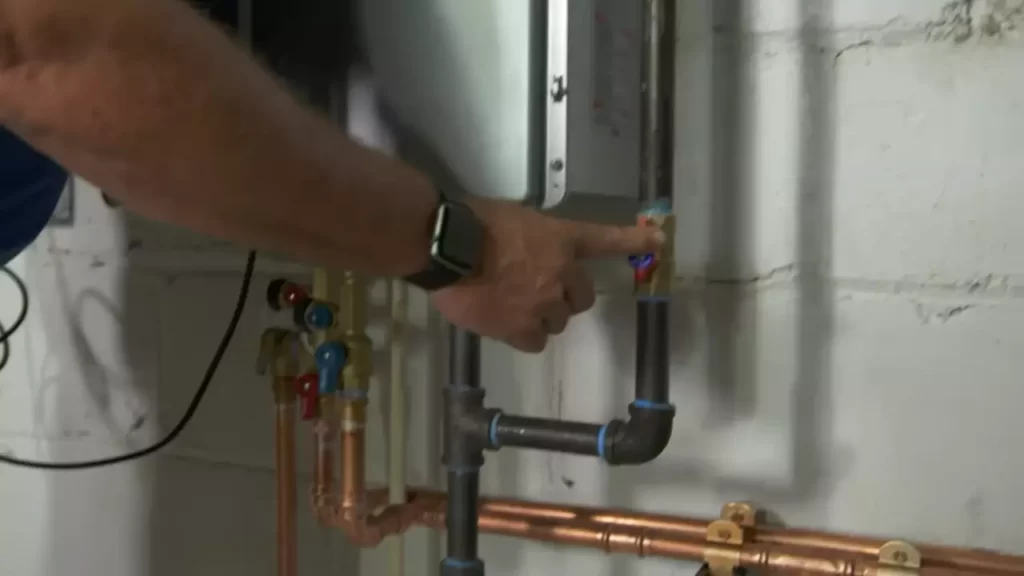
Clearance requirements for ventilation and safety
Proper ventilation is essential for the safe operation of a propane tankless water heater. Failing to meet the recommended clearance requirements can lead to restricted airflow, potential malfunctions, and even safety hazards. To ensure optimal ventilation, it’s important to adhere to the following clearance guidelines:
| Type of Clearance | Minimum Distance |
|---|---|
| Sides | at least 6 inches |
| Top | at least 12 inches |
| Bottom | at least 18 inches |
| Front | at least 24 inches |
Remember, these clearances are essential to maintain proper ventilation and prevent the accumulation of flammable gases. Additionally, it is crucial to follow the safety instructions provided by the manufacturer to ensure the safe and efficient operation of the water heater.
Considering accessibility for maintenance and service
While installing a propane tankless water heater, it’s important to consider accessibility for future maintenance and service. Adequate space around the unit ensures easy access for servicing, repairs, and any required part replacements. Prioritize the following factors when determining the placement:
- Allow sufficient clearance for regular maintenance tasks, such as cleaning filters or descaling components.
- Ensure there is enough space for service technicians to work comfortably on the unit if any repairs are needed.
- Consider accessibility to gas and water connections, electrical outlets, and control panels for ease of inspection and adjustments.
By taking these factors into account during the installation process, you can ensure the water heater remains easy to maintain and service in the long run.
Shutting Off Gas And Water Supply
Shutting Off Gas and Water Supply
Before installing a propane tankless water heater, it’s crucial to properly shut off the gas and water supply to your existing water heater. This ensures your safety and prevents any potential damage. In this section, we will guide you through the process step by step.
Turning off the gas supply
To start, locate the gas supply valve near your existing water heater. It’s usually a yellow handle or lever connected to a pipe.
| Step | Description |
|---|---|
| 1 | Rotate the handle or lever to the perpendicular position, so it is perpendicular to the gas pipe. |
| 2 | Ensure the handle or lever is firmly closed to shut off the gas supply completely. |
Shutting off the water supply
Next, you need to find the water supply valve connected to your water heater. This valve controls the flow of water into the unit.
| Step | Description |
|---|---|
| 1 | Locate the water supply valve near the water heater. It is typically a lever or wheel. |
| 2 | Turn the lever clockwise or rotate the wheel until it is in the closed position. |
Draining the existing water heater
Before removing the old water heater, it’s essential to drain any remaining water to prevent leaks and damage. Follow these steps to drain the water heater effectively.
- Locate the drain valve at the bottom of the water heater. It is commonly a spigot or a small valve.
- Place a bucket or a large container beneath the drain valve to collect the water.
- Open the drain valve by turning it counterclockwise or pulling the lever (depending on the type of valve).
- Allow the water to drain completely. This may take some time, so be patient.
- Once the water has drained, close the drain valve by turning it clockwise or pushing the lever back to its original position.
By following these simple steps, you have successfully shut off the gas and water supply to your existing water heater and drained it. Now you can proceed with the installation of your new propane tankless water heater confidently.
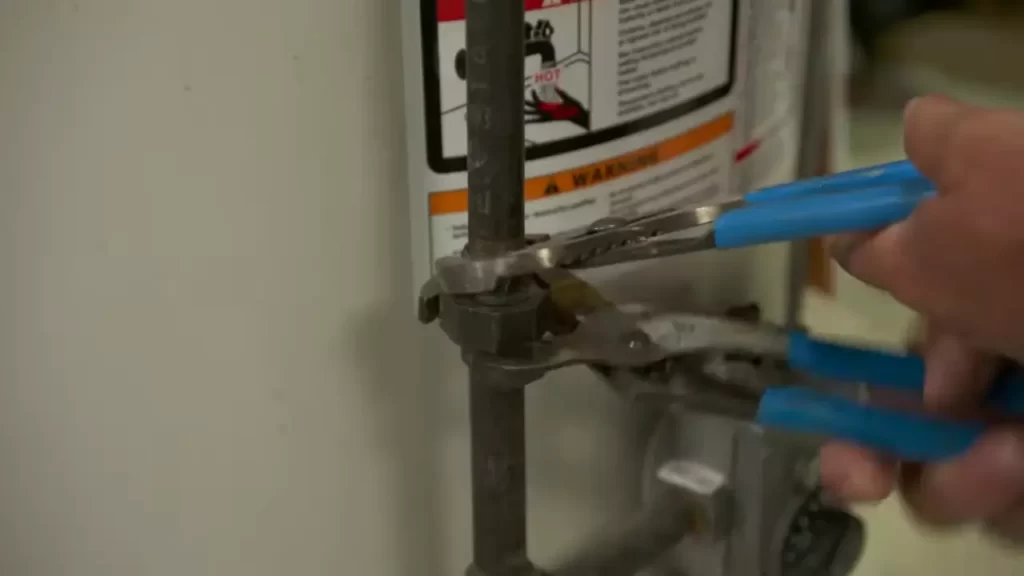
Disconnecting And Removing The Old Water Heater
When it comes to installing a new propane tankless water heater, one of the first steps is to properly disconnect and remove the old water heater. This ensures a smooth transition and prevents any potential issues during the installation process. In this section, we will guide you through the necessary steps to safely disconnect the old water heater, including shutting off electricity, disconnecting electrical and plumbing connections, and removing the unit itself.
Shutting off electricity to the old water heater
Before you start working on disconnecting the old water heater, it is crucial to shut off electricity to the unit to avoid any electrical hazards. Here’s how you can do it:
- Locate the circuit breaker panel in your house.
- Identify the breaker that controls the power supply to the water heater.
- Switch off the corresponding breaker to cut off the electricity.
By following these simple steps, you can ensure that the old water heater is completely disconnected from the power source, minimizing any risks during the removal process.
Disconnecting electrical and plumbing connections
Once the electricity is turned off, you can proceed to disconnect the electrical and plumbing connections from the old water heater. Here’s what you need to do:
- Electrical connections: Start by shutting off the power supply at the main electrical panel to ensure additional safety. Then, carefully disconnect the electrical wires from the water heater using a screwdriver or appropriate tools. Remember to label each wire to make the installation of the new water heater easier.
- Plumbing connections: Before disconnecting the plumbing connections, make sure to turn off the water supply to the old water heater. You can locate the shut-off valve near the unit. Once the water supply is off, use a wrench or pliers to disconnect the water inlet and outlet pipes from the water heater. Be prepared for some residual water to drip, so keep a bucket or towels handy to catch any spills.
By following these steps, you can effectively disconnect the old water heater from both the electrical and plumbing systems, making it ready for complete removal.
Safely removing the old water heater
Now that all the electrical and plumbing connections are disconnected, it’s time to safely remove the old water heater from its current location. Follow these steps to ensure a smooth removal process:
- Find a suitable location to place the old water heater temporarily, preferably away from any obstructions or flammable materials.
- Use a hand truck or dolly to carefully move the water heater to the temporary location.
- Have someone assist you in lifting the water heater onto the dolly or hand truck to avoid strain or injury.
- Ensure that the water heater is securely strapped or fastened to the dolly for stability during transportation.
- Transport the old water heater to a designated disposal or recycling center in accordance with local regulations.
By following these steps and guidelines, you can safely remove the old water heater and make way for the installation of a new propane tankless water heater. Remember to always prioritize safety and consult a professional if you are uncertain about any aspect of the process.
Mounting And Connecting The Propane Tankless Water Heater
Once you have chosen a propane tankless water heater as your go-to solution, the next step is to mount and connect it properly. This involves securing the unit in place, connecting the gas lines and ensuring proper fittings, as well as connecting the hot and cold water lines. Additionally, installing the necessary ventilation and exhaust system is crucial to ensure the safe and efficient operation of the water heater.
Mounting the new water heater securely
First and foremost, it is essential to mount the new propane tankless water heater securely. This will not only prevent any accidents but also ensure the stability and longevity of the unit. Follow these steps to mount the water heater properly:
- Choose a suitable location for the water heater, ensuring it meets all the necessary space and clearance requirements specified by the manufacturer.
- Use sturdy brackets or mounting kits to securely attach the unit to the wall or other supporting structures. Ensure that the mounting points are level and properly aligned.
- Consider using vibration-dampening pads or similar accessories to minimize any noise or vibrations that may be generated during the operation of the water heater.
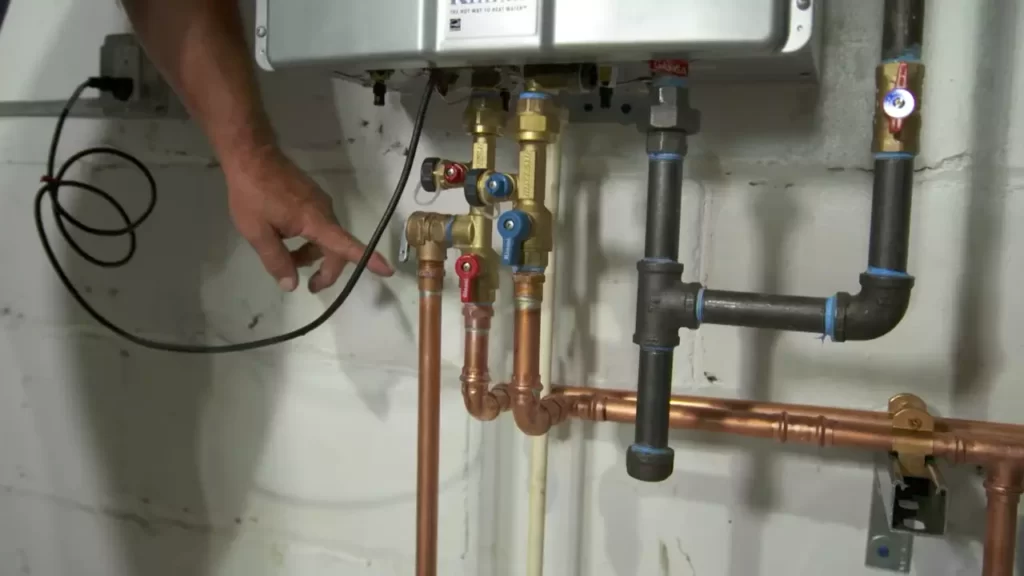
Connecting gas lines and ensuring proper fittings
Connecting the gas lines to the propane tankless water heater is a critical step that requires attention to detail and adherence to safety standards. Follow these steps to ensure a proper connection:
- Before starting the installation, make sure to turn off the propane supply to prevent any leaks or accidents.
- Use the appropriate fittings and connectors to connect the gas line to the water heater. Ensure that all connections are secure and leak-free.
- Apply an approved gas leak detection solution to all the connections to check for any potential leaks. If bubbles form, there is a leak; in this case, you should tighten the fitting or connector or seek professional assistance.
Connecting hot and cold water lines
Properly connecting the hot and cold water lines to the propane tankless water heater is essential for a seamless and reliable supply of hot water. Here’s how you can do it:
- Identify the hot and cold water lines and shut off the main water supply before proceeding with the installation.
- Attach the appropriate connectors to the water heater and make sure they are tightly secured.
- Connect the hot and cold water lines to the respective connectors, ensuring that the connections are leak-free.
- Once the connections are in place, turn on the main water supply and check for any leaks. If there are any leaks, tighten the connections or seek professional help.
Installing the necessary ventilation and exhaust system
An essential part of installing a propane tankless water heater is setting up the proper ventilation and exhaust system. This ensures the safe and efficient operation of the unit. Follow these steps:
- Refer to the manufacturer’s guidelines to determine the specific ventilation and exhaust requirements for your model.
- Install the appropriate vent pipes that will direct the exhaust gases safely outside your home or building.
- Make sure the vent pipes are properly secured and sealed to prevent any leaks or backdrafts.
- Consider installing a condensate drain to safely remove any condensation produced by the water heater.
By following these steps and guidelines, you can effectively mount and connect your propane tankless water heater, ensuring its proper functioning and longevity. However, if you are unsure about any aspect of the installation process, it is always recommended to consult a professional plumber or technician to avoid any potential mishaps or mistakes.
Testing And Adjusting The Propane Tankless Water Heater
Checking for gas leaks
Before testing your propane tankless water heater, it is crucial to check for any gas leaks. Gas leaks can be dangerous and need to be addressed immediately. Here’s a step-by-step guide to help you through the process:
- Make sure all gas supply valves are turned off.
- Apply a gas leak detection solution or soapy water to all gas connections, including the gas supply line and the connections to the water heater.
- If any bubbles form when the solution is applied, it indicates the presence of a gas leak, and immediate action is required.
- If you find a gas leak, turn off the gas supply to the water heater and tighten any loose connections or replace faulty parts before retesting for leaks.
- Once all gas connections are secure and no leaks are present, you can proceed to the next step of testing your water heater.
Testing water flow and temperature
After ensuring there are no gas leaks, it’s time to test the water flow and temperature of your propane tankless water heater. Follow these steps to ensure optimal performance:
- Turn on the water supply and open a hot water faucet nearest to the water heater.
- Confirm that the water heater is receiving water by checking the water flow at the opened faucet.
- Allow the water to run for a few minutes to ensure any air in the system is flushed out.
- Once the water flow is consistent, check the temperature of the hot water. It should meet your desired comfort level. If the water is too hot or too cold, adjustment may be necessary.
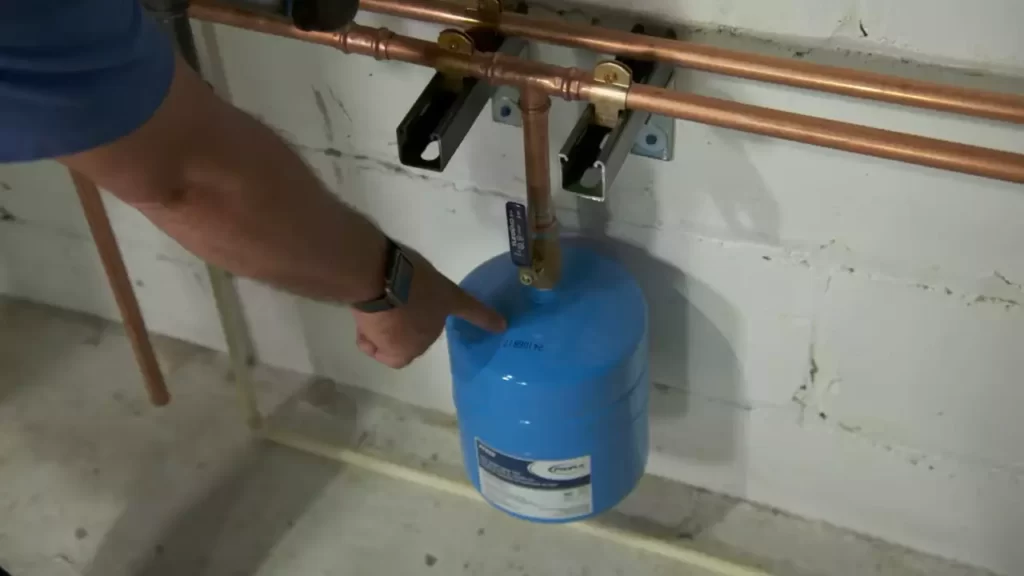
Adjusting settings for optimal performance
Every propane tankless water heater has adjustable settings to cater to your specific needs. Here’s how you can adjust the settings for optimal performance:
- Refer to the manufacturer’s instructions to locate the controls for adjusting the water temperature. These controls are typically found on the front panel of the water heater.
- Use caution when making adjustments to avoid scalding or overheating the water.
- Make small adjustments, waiting a few minutes in between each adjustment to allow the water temperature to stabilize.
- Test the water temperature at the nearest hot water faucet to ensure it is within your desired range.
- Keep in mind that different water heaters may have different adjustment methods, so always refer to the manufacturer’s instructions for specific guidance.
Troubleshooting common installation issues
During the installation process of your propane tankless water heater, you might encounter some common issues. Here are a few troubleshooting tips to help you address them:
- Fluctuating water temperature: If your water temperature varies significantly during use, it could be due to insufficient water flow or water pressure. Check for any obstructions or blockages in the water lines and clean or replace any clogged filters.
- Low water pressure: If you are experiencing low water pressure, ensure that all valves and faucets are fully open. Additionally, check for any kinks or leaks in the water line and address them accordingly.
- Ignition or startup issues: If your water heater fails to ignite or start up, check the gas supply, pilot light, and ignition system. Ensure there is no interruption in the gas supply and that all components are clean and free from debris.
By following these steps and troubleshooting tips, you can successfully test, adjust, and address common installation issues with your propane tankless water heater for optimal performance.
Regular Maintenance And Cleaning
Maintaining your propane tankless water heater is crucial to ensure its peak performance and longevity. Regular maintenance and cleaning of the water heater will not only improve its efficiency but also help you avoid costly repairs or replacements down the line. In this section, we will discuss some essential tasks that should be performed as part of your regular maintenance routine.
Flushing the water heater periodically
Flushing your propane tankless water heater should be done at least once a year to remove any mineral deposits or sediment buildup that may have accumulated inside. This process helps maintain the efficiency and performance of the unit.
Here’s a step-by-step guide to flushing your water heater:
- Turn off the power to the water heater to ensure safety.
- Close the water supply valve to the heater.
- Attach a hose to the drain valve at the bottom of the heater.
- Place the other end of the hose into a drain or bucket.
- Open the drain valve and allow the water to flush out for a few minutes.
- Once the water runs clear, close the drain valve and remove the hose.
- Open the water supply valve to refill the tank.
- Turn on the power to the water heater.
Cleaning or replacing filters
Filters play a vital role in ensuring the proper functioning of your propane tankless water heater. Over time, these filters can become clogged with debris, affecting both the efficiency and performance of the unit. Cleaning or replacing the filters regularly is essential to prevent any potential issues.
Follow these steps to clean or replace the filters:
- Turn off the power and water supply to the water heater.
- Locate the filters, which are typically located near the inlet valves.
- If the filters are reusable, detach them from the unit and rinse them with water.
- If the filters are disposable, remove them and replace them with new ones.
- Reattach the filters to the unit.
- Turn on the power and water supply to the water heater.
Checking for mineral buildup or scaling
Mineral buildup or scaling is a common issue in propane tankless water heaters, especially in areas with hard water. This buildup can reduce the efficiency of the unit and lead to various problems. Regularly checking for mineral buildup or scaling is crucial to maintain the optimal performance of your water heater.
Here’s what you should do to check for mineral buildup or scaling:
- Turn off the power and water supply to the water heater.
- Inspect the internal components of the heater for any signs of mineral buildup or scaling.
- If you notice any accumulation, use a cleaning solution specifically designed for tankless water heaters to remove the buildup.
- Follow the manufacturer’s instructions for cleaning and use caution when applying the solution.
- Rinse the components thoroughly to remove any residues.
- Turn on the power and water supply to the water heater.
By incorporating these regular maintenance tasks into your routine, you can ensure the optimal performance and longevity of your propane tankless water heater. Remember to consult the manufacturer’s guidelines for specific instructions related to your unit. With proper maintenance, you can enjoy efficient and reliable hot water for years to come.
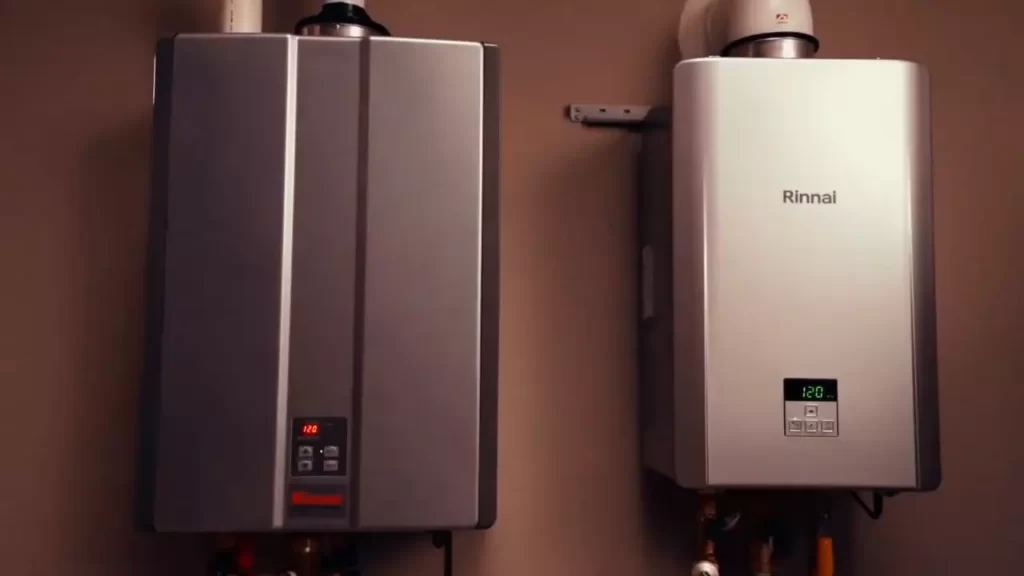
Troubleshooting Common Issues
Identifying Common Problems and Their Causes
If you are experiencing issues with your propane tankless water heater, it is crucial to identify the problem and its root cause. By doing so, you can efficiently troubleshoot and resolve the issue, ensuring optimal performance of your water heater. Here are some common problems you may encounter and their possible causes:
1. No Hot Water: One of the most common issues homeowners face is the lack of hot water. This problem can be caused by several factors, such as a faulty igniter, gas supply issues, or a malfunctioning heating element.
2. Inadequate Hot Water: If your tankless water heater is not providing enough hot water, it could be due to factors like low gas pressure, improper sizing of the unit, or a clogged water filter.
3. Fluctuating Water Temperature: A fluctuating water temperature can be frustrating and uncomfortable. This problem may occur due to a malfunctioning thermostat, inadequate gas supply, or an issue with the water flow rate.
4. Ignition Failure: If your water heater fails to ignite, it may indicate a problem with the ignition mechanism or gas supply. Gas flow interruptions or a faulty igniter can lead to ignition failure.
Steps to Troubleshoot and Resolve Issues
Now that you are aware of common problems and their causes, let’s discuss the steps to troubleshoot and resolve these issues:
1. Check Gas Supply: Ensure that the gas supply to your water heater is turned on and the gas valve is in the open position. If you suspect a gas leak, it is important to contact a professional immediately.
2. Clean Water Filter: Over time, debris and sediment can accumulate in the water filter, causing flow restrictions. Regularly clean or replace the water filter to maintain proper water flow.
3. Inspect Igniter: If your water heater fails to ignite, check the igniter for any wear or damage. Clean or replace the igniter if necessary.
4. Adjust Temperature Settings: If you are experiencing fluctuating water temperatures, adjust the temperature settings on your water heater according to your needs. Refer to the manufacturer’s instructions for guidance.
5. Verify Venting System: Ensure that the venting system is properly installed and free from obstructions. An obstructed vent can cause improper combustion and lead to issues with your water heater.
6. Consider Water Flow Rate: If your tankless water heater is undersized for your household’s water demands, you may experience inadequate hot water. Consult with a professional to determine if upgrading to a larger unit is necessary.
Seeking Professional Assistance if Needed
While troubleshooting common issues with your propane tankless water heater can often be done on your own, there may be instances where seeking professional assistance is essential. If you are unsure about the cause of the problem or unable to resolve it despite following the troubleshooting steps, it is recommended to contact a licensed HVAC technician or a plumber with experience in handling tankless water heaters. They have the expertise and tools required to diagnose and fix complex issues, ensuring safe and efficient operation of your water heater.
Remember, proper maintenance and regular inspections can help prevent many common issues from occurring in the first place. By familiarizing yourself with your water heater’s manual and performing routine maintenance tasks, you can avoid potential problems and maximize the lifespan of your propane tankless water heater.
Extending The Lifespan Of Your Propane Tankless Water Heater
Extending the Lifespan of Your Propane Tankless Water Heater
A propane tankless water heater is a valuable investment for any homeowner looking to enjoy on-demand hot water and energy savings. To make the most of your investment, it is crucial to extend the lifespan of your water heater through proper usage, regular maintenance, and early problem detection. In this article, we will provide you with essential tips on how to prolong the lifespan of your propane tankless water heater.
Tips for prolonging the lifespan of the water heater
- Proper installation: To ensure the longevity of your propane tankless water heater, it is imperative to hire a professional technician for its installation. They will have the expertise to correctly set up the unit and make sure it complies with safety regulations.
- Water quality: Hard water can cause mineral buildup in the heat exchanger, affecting the performance and lifespan of your water heater. Consider installing a water softening system or using a descaling agent regularly to prevent mineral accumulation.
- Regular maintenance: Schedule regular maintenance sessions with a qualified technician to inspect and clean your propane tankless water heater. This will help identify and resolve any potential issues before they escalate and lead to costly repairs or premature failure of the unit.
- Ventilation: Adequate ventilation is crucial for the proper operation of your propane tankless water heater. Ensure that the ventilation system is clean and clear of any debris or obstructions, allowing the unit to function efficiently and reducing strain on its components.
Proper usage and maintenance practices
Proper usage and maintenance practices are essential in extending the lifespan of your propane tankless water heater. Here are some important aspects to consider:
- Use the recommended gas and water pressure levels to prevent damage to the water heater’s internal components.
- Follow the manufacturer’s instructions for regular maintenance tasks, such as cleaning the air intake filter and flushing the heat exchanger.
- Keep the area surrounding the water heater clean and free from clutter to ensure proper airflow.
- Monitor the temperature settings of the water heater to prevent overheating and potential damage to the unit.
Recognizing signs of potential problems
Being able to recognize signs of potential problems can save you from major water heater issues. Keep an eye out for the following warning signs:
- Inconsistent water temperature
- Unusual noises or vibrations
- Decrease in hot water flow
- Inefficient heating or prolonged heating times
If you notice any of these signs, it is advisable to contact a professional technician promptly to diagnose and resolve the problem to prevent further damage to your propane tankless water heater.
Frequently Asked Questions Of How To Install A Propane Tankless Water Heater
Can I Install A Gas Tankless Water Heater Myself?
No, it is not recommended to install a gas tankless water heater yourself. It is a complex process that requires professional knowledge and skills. Hiring a licensed plumber ensures proper installation, safety, and warranty compliance.
Can You Have A Tankless Water Heater With Propane?
Yes, you can have a tankless water heater that runs on propane. It offers efficient heating without needing a bulky storage tank. Propane tankless water heaters are a popular choice for small spaces or areas where natural gas isn’t available.
How Big Of A Propane Line Do I Need For A Tankless Water Heater?
For a tankless water heater, the size of the propane line depends on its BTU rating. It’s best to consult with a professional who can calculate the correct gas pipe size based on the heater’s requirements and the length of the gas line.
How Do You Vent A Propane Tankless Water Heater?
To vent a propane tankless water heater, you need to install a proper venting system. This involves connecting the heater to a vent pipe that leads outside, ensuring the proper exhaust of combustion gases. Follow manufacturer’s instructions and local codes for safe and effective venting.
Conclusion
To wrap up, installing a propane tankless water heater is a smart choice for efficient and eco-friendly hot water supply in your home. The step-by-step process shared in this guide ensures a smooth installation, allowing you to enjoy the benefits of endless hot water.
Remember to follow safety precautions, consult professional assistance if needed, and maintain regular maintenance for optimal performance. With a tankless water heater, you can say goodbye to cold showers and hello to convenient, on-demand hot water.
